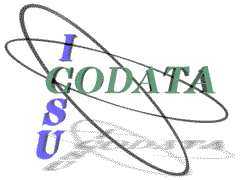|
ABCD Schema - Task
Group on |
 |
Protocol development (DiGIR Project) | Protocol development (BioCASE Project) | Content Definition Subgroup and the ABCD Schema | Members of the Task Group
Workshops: Santa Barbara | Sydney | Sydney 2 | Indaiatuba | Oeiras
ABCD was preceded by the TDWG Subgroup on Accession Data.
Reference List of Standards, Information Models, and Data Dictionaries for Biological Collections
The objective of the working group is to foster accessibility of existing and emerging biological collection data banks at the international level by developing proposals for data and metadata standards. The groups long-term objectives:
· Foment standardization of the terminology used to model biological collection information.
· Collect and make public documents providing standards used in - or of potential use for - biological collections.
· Contribute to a general format for data exchange and retrieval for biological collections.
Background
Biological collections exist in different scientific sub-disciplines: zoological, botanical, and palaeontological natural history collections, living collections like botanical and zoological gardens and microbial strain and tissue collections, and data collections stemming from surveys of objects in the field (like floristic and faunistic mapping, inventories). Research conducted over the past decade has revealed that all these collections have most of their attributes in common, although the terminology used to describe them may differ substantially.
Biological collections represent an immense knowledge base on global biodiversity. Field and research notes contain detailed data on the locality, time, and often appearance of organisms; the collected object itself can be a physical resource for research and industry. The preserved object also presents a falsifiable source of information, i.e. it can be re-observed to verify a scientific hypothesis based on it. Between 2 and 3 billion objects exist in natural history collections alone. Currently, this knowledge base is largely under-utilized, because its highly distributed, heterogeneous, and complex scientific nature obstructs efficient information retrieval.
Databasing and networking is now seen as the key to employ the potential value of biological collections for science, government, education, the public, and businesses, operating in the environmental sector, in biotechnology, or in biodiversity research. Efforts to network the resources exist, but there is little transfer of technology and co-ordination on a global level. International collaboration on the standardization of information models and standard data used in collection databases can enhance the efficiency of this process.
Results
A first achievement of the working group has been to bring together the following networks on specimen information to discuss common access, namely ENHSIN, ITIS, ITIS-CA, REMIB, Species Analyst, speciesLink, and the Virtual Australian Herbarium. The discussion started during the TDWG meeting in Frankfurt (2000) and was picked up in workshops in Santa Barbara (June 2001), Sydney ( November 2001), an informal meeting in Sydney in March 2002, the third workshop in Indaiatuba, Brasil (October 2002) and in the forth workshop in Oeiras, Portugal (October 2003).
CODATA
The former Working Group was accepted by the CODATA Assembly in Montreal as a new CODATA Task Group in September 2002.
Working Group Homepage | TDWG Accessions Subgroup Homepage | CODATA | TDWG
Page hosted by the Department
of Biodiversity Informatics and Laboratories of the Botanic
Garden and Botanical Museum Berlin-Dahlem. DISCLAIMER
Page editor: Walter Berendsohn (w.berendsohn [at] bgbm.org).
This page last edited on 06.03.2005